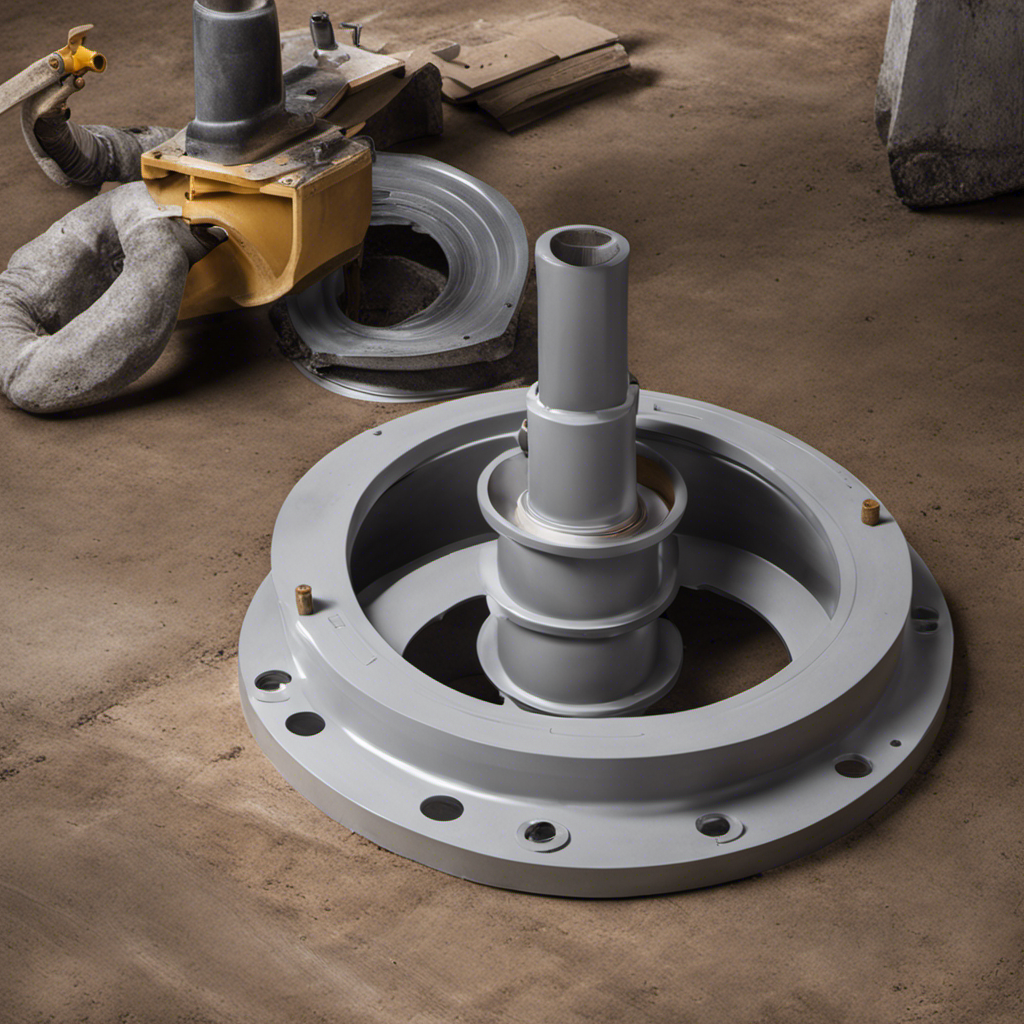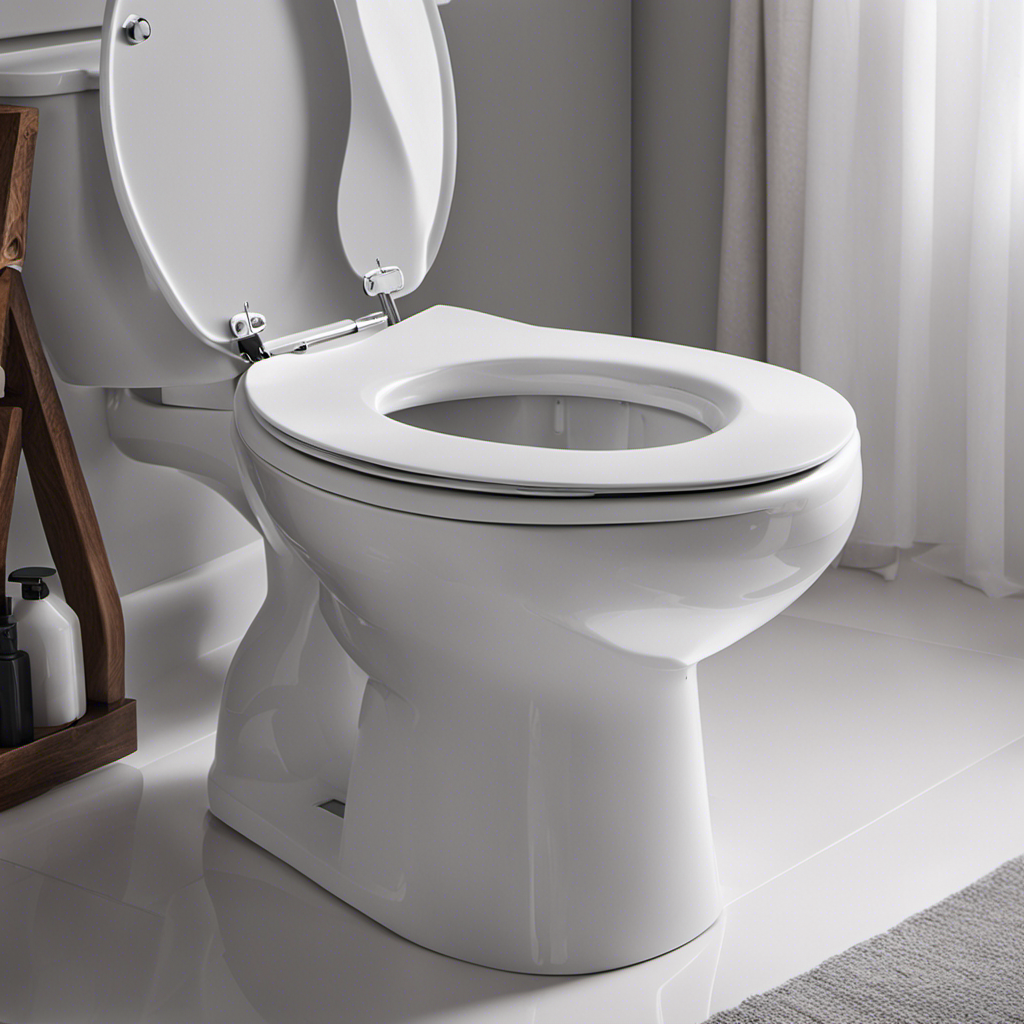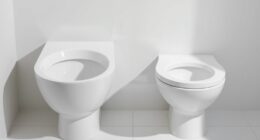So, you’ve got a running toilet on your hands, huh? Well, fear not, my friend, because I’m here to guide you through the wonderful world of toilet repair.
In this handy-dandy article, I’ll show you step-by-step how to fix that annoyingly persistent problem. Grab your tools, shut off the water supply, and let’s get to work on that flapper or fill valve.
Trust me, with a little know-how and a touch of finesse, you’ll have your toilet back up and flushing in no time.
Key Takeaways
- Identifying common toilet issues is the first step in fixing a running toilet.
- Having the right tools, such as a toilet repair kit, adjustable wrench, and screwdriver, makes the repair process easier and more efficient.
- Shutting off the water supply is crucial to avoid flooding and allows for inspection and cleaning or replacing of damaged components like the flapper and fill valve.
- Properly fixing the flapper or fill valve and adjusting the water level ensures the toilet stops running, water pressure is adjusted correctly, and prevents leaks or inefficiencies.
Identifying the Problem
To identify the problem with your running toilet, you’ll need to check the flapper valve and the fill valve. These are the two most common toilet issues that can cause your toilet to continuously run.
Troubleshooting toilet problems can seem daunting, but with a little knowledge and some basic tools, you can easily fix the issue yourself.
Start by inspecting the flapper valve, which is located at the bottom of the tank. If it is worn out or not sealing properly, it may need to be replaced.
Next, examine the fill valve, which controls the water level in the tank. If it is not functioning correctly, it may need to be adjusted or replaced.
By identifying these common issues, you’re one step closer to fixing your running toilet and restoring peace to your bathroom.
Now, let’s move on to gathering the necessary tools.
Gathering the Necessary Tools
You’ll need a few tools to fix the issue with your toilet that won’t stop running. Don’t worry, with the right equipment and a little know-how, you’ll have your toilet back in proper working order in no time.
Here are the tools you’ll need:
-
Toilet repair kit: This all-in-one kit includes essential components like a fill valve, flush valve, and flapper, which are often the culprits behind a running toilet. It’s a convenient and cost-effective solution for troubleshooting common toilet issues.
-
Adjustable wrench: This versatile tool will come in handy for loosening and tightening nuts and bolts during the repair process. Make sure to choose an adjustable wrench that fits the size of the nuts on your toilet.
-
Screwdriver: A screwdriver will be necessary for removing screws and accessing various parts of the toilet. A Phillips or flathead screwdriver should cover most needs.
With these tools at your disposal, you’ll be well-equipped to tackle the task of fixing your running toilet.
Shutting off the Water Supply
Don’t forget to shut off the water supply before attempting any repairs to avoid potential flooding.
When it comes to troubleshooting a running toilet, there are a few common causes to consider. One possibility is a faulty flapper, which can prevent the tank from properly sealing and cause water to continuously flow into the bowl. Another potential culprit is a malfunctioning fill valve, which may not be shutting off the water supply when the tank is full.
To troubleshoot these issues, start by removing the tank lid and inspecting the flapper and fill valve for any visible signs of damage or debris. If necessary, clean or replace these components to restore proper function.
By addressing these common causes, you can effectively fix a running toilet and prevent water wastage.
Now, let’s delve into the steps for fixing the flapper or fill valve.
Fixing the Flapper or Fill Valve
One way to fix the flapper or fill valve is by inspecting them for any visible signs of damage or debris. If there is any damage or debris present, it can prevent the valve from sealing properly and cause the toilet to run continuously.
Here are some steps to fix the flapper or fill valve:
- Turn off the water supply to the toilet.
- Remove the tank lid and locate the flapper or fill valve.
- Inspect the flapper for cracks or warping, and the fill valve for any clogs or blockages.
- If necessary, clean the flapper or fill valve to remove any debris.
- If the flapper or fill valve is damaged, replace it with a new one.
By properly fixing the flapper or fill valve, you can ensure that the toilet stops running and water pressure is adjusted correctly.
Once these repairs are made, it’s important to test and adjust the toilet to ensure it is functioning properly.
Testing and Adjusting the Toilet
To test and adjust, start by turning on the water supply and observing the water level in the tank. Troubleshooting common toilet issues requires a deep understanding of the role of water pressure in toilet operation. By conducting a simple test, you can identify and resolve various toilet problems efficiently. One effective way to test your toilet is to check the water level. If it is too high or too low, it can lead to issues like constant running or incomplete flushing. To adjust the water level, you can use the fill valve adjustment screw. By turning it clockwise or counterclockwise, you can increase or decrease the water level respectively. This adjustment is crucial to ensure proper functioning of the toilet and prevent any potential leaks or inefficiencies.
| Common Toilet Issues | Role of Water Pressure in Toilet Operation | Solution |
|---|---|---|
| Constant running | Insufficient water pressure can cause the flapper to not seal properly, resulting in a running toilet. | Adjust the water level by using the fill valve adjustment screw. |
| Incomplete flushing | Insufficient water pressure may not generate enough force to flush waste completely. | Increase the water level to improve the flushing power. |
| Leaking toilet | High water pressure can cause leaks in the toilet tank or from the fill valve. | Decrease the water level to reduce the pressure and prevent leaks. |
Frequently Asked Questions
How Much Does It Typically Cost to Repair a Running Toilet?
Toilet repair cost can vary depending on factors like the extent of damage, required parts, and labor fees. It’s important to assess the specific issue before estimating a cost.
What Are Some Common Signs That Indicate a Toilet Is Running?
Common signs of a running toilet include continuous water flow, a hissing sound, and a constantly moving toilet handle. Repair cost varies depending on the issue, ranging from a simple fix to more complex repairs.
Can a Running Toilet Cause an Increase in Water Bills?
A running toilet can definitely cause an increase in water bills. It’s like pouring money down the drain! Not only does it impact the environment, but it’s also a sign that something is wrong. Troubleshooting and repairing it is crucial.
Are There Any Temporary Fixes for a Running Toilet Until It Can Be Repaired?
Yes, there are temporary fixes for a running toilet until it can be repaired. By following troubleshooting steps such as adjusting the flapper or replacing the fill valve, you can stop the toilet from running.
Is It Necessary to Hire a Professional Plumber to Fix a Running Toilet, or Can It Be Done as a DIY Project?
I’ve fixed running toilets before, but sometimes it’s best to leave it to the pros. DIY toilet repair can save money, but hiring a professional plumber ensures quality work and prevents further damage.
Conclusion
So there you have it, my fellow fixers of faulty toilets.
With a little bit of patience, some handy tools, and a sprinkle of know-how, you can put an end to that incessant running water.
Remember, just like a skilled mechanic tinkering under the hood of a car, you too can become the master of your own porcelain throne.
So go forth, my friends, and conquer those running toilets.
May your bathrooms be silent and your flushes be powerful.
Happy fixing!










